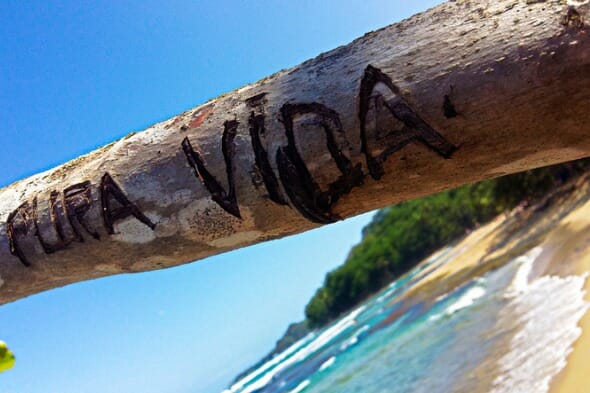
No matter your age, you’ve probably dreamed of retiring on a sandy beach somewhere at some point. Perhaps you’ve started planning your retirement in Florida or San Diego. An even more attractive move could be retiring on a tropical island, such as Costa Rica. Retiring to Costa Rica has proven to be incredibly affordable for Americans, though you’ll obviously want to plan ahead for it. A financial advisor can help you prepare for a retirement abroad.
Average Cost to Retire in Costa Rica
According to March 2022 data from Numbeo, the average cost of living in Costa Rica, minus rent, totals around $600 per month or $7,200 a year for an individual retiree. So if you and your spouse want to retire together, you can easily do so for about $1,200 a month pre-rent. If you were to include a one-bedroom apartment in a city center, you’d be looking at another $500 a month. That brings the total monthly cost of living in Costa Rica to just $1,100.
To be sure, the lifestyle you plan to live will determine how much a Costa Rican retirement will actually cost you. For example, if you choose to run your air conditioning 24/7 or eat out at restaurants every night, your retirement will cost more. Luckily, the country’s lower cost of living (compared to the U.S.), means your savings can go a lot further especially if you choose to live modestly. So if you’re buying your groceries at local markets to cook at home, you’ll find you can easily spend under $200 a month on food.
Retiring in Costa Rica – Emigration Programs
For Americans, Costa Rica is just a short plane ride away, making the journey there easy enough. But once you’re there, you’ll need to have the proper paperwork in order to stay and enjoy your retirement.
Your first resident option is enrolling in the Pensionado Program, which is made for retirees. To qualify, you’ll need a monthly income of at least $1,000 from a pension or retirement fund. You’ll then have to transfer those funds into a Costa Rican bank account and exchange it into local currency. Then you can withdraw and spend it during your stay.
Your second emigration option is the Rentista Program. This may work better for those who don’t have enough fixed retirement income. You can qualify if you provide proof of a current cash balance of at least $60,000 or a monthly income of at least $2,500 for two years. Again, you must transfer the qualifying funds into a Costa Rican bank account to be able to withdraw and spend.
The third and last option is the Inversionista Program. This requires you to immediately invest at least $200,000 in an approved Costa Rican business or property.
Each of these programs charges a $250 application fee in addition to their income requirements. Plus, the consulate will charge $40 per document for authentication along with fees for document translation, notarization and obtaining official documents. You will also have to renew your program status every two years, which costs $100 for each renewal. You must provide the same income information and documents for each renewal. After three consecutive renewals, you can apply for permanent resident status.
Retiring in Costa Rica – Housing

Most American retirees in Costa Rica choose to rent instead of buying a home or apartment. For a sizable home or condo in a city, you can expect to pay between $330 and $750 per month in rent. If you’re looking for something bigger or if you have more funds in your housing budget, you can find larger homes from $800 to $2,000 per month. On the other hand, you can find dwellings considerably cheaper outside of a city center.
While more uncommon than renting, buying a home in Costa Rica is also an option. A reasonably sized home can cost around $75,000, while a larger home with more rooms and amenities can reach up to $300,000. Utilities, like water, electricity and garbage collection, typically total an extra $75 per month. Costa Rica also boasts solid Internet service, with unlimited coverage costs reaching about $50.
How to Save for Your Retirement
No matter where you want to retire, saving for retirement throughout your life is a crucial part of your financial health. The average retirement account balance for those 65 and older in the U.S. is $255,151, according to a 2021 report from Vanguard. In addition, retired Americans receive about $1,657 a month in Social Security benefits (as of January 2022). Due to the lower cost of living in Costa Rica, meeting these amounts can cover the average annual cost of to retire there. Again, living more modestly in retirement will help your money last longer. You can also choose to save more towards your retirement so you can afford more.
Unlike the U.S., Costa Rica offers universal healthcare. The government-run system, known as Caja, charges residents a low monthly fee based on your income. This fee covers doctor’s visits, medicines, surgeries and more. This means you won’t need to worry about saving extra tens of thousands of dollars to cover the medical expenses that arise later in life. You may choose to visit private clinics or hospitals, which you can pay for in cash, and sign up for a private health insurance plan.
To get your retirement savings started, you should take advantage of your employer-sponsored 401(k) if you can. You should also contribute as much of your paycheck as you reasonably can to maximize your savings. If you don’t have a 401(k), or to even supplement those savings, consider opening an IRA, or individual retirement account. Again, it helps to contribute as much as you can to these accounts. Not only will it boost your savings, but it can decrease your tax burden for the year, as well. If you find yourself needing help to maximize your savings, it can help to find a certified financial planner (CFP), an advisor who can help you plan for retirement.
Bottom Line

Retiring in a foreign country like Costa Rica offers Americans an opportunity for the good life at a cheaper price. Rents, food and healthcare are much cheaper than in the U.S. This helps you stretch your savings much further once you’re relying on your fixed monthly income in retirement. The nation is a perfectly viable retirement destination, provided you adequately plan ahead of time.
Tips on Saving for Retirement
- Planning for retirement is a difficult task, and doing so abroad can lead to even more roadblocks. A financial advisor can help you get your plans in order, though. Finding a qualified financial advisor doesn’t have to be hard. SmartAsset’s free tool matches you with up to three financial advisors who serve your area, and you can interview your advisor matches at no cost to decide which one is right for you. If you’re ready to find an advisor who can help you achieve your financial goals, get started now.
- No worries if you want to take a more DIY approach to your savings, though. A retirement calculator like ours can give you a specific goal to start saving toward.
Photo credit: ©iStock.com/JoséAndrés 22 CR, ©iStock.com/DavorLovincic, ©iStock.com/monkeybusinessimages